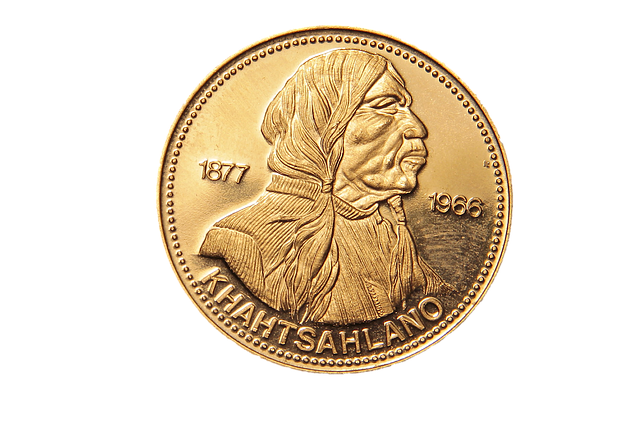Gold Individual Retirement Accounts (IRAs) enable retirees to include physical gold as part of their diversified retirement investment strategy, with the IRS allowing up to 25% of an IRA's assets to be held in gold, subject to specific purity standards for coins and bars. Investors must consider the service quality, educational resources, precious metal selection, and pricing when choosing a Gold IRA company, as well as the storage security and fee transparency these firms offer. A Gold IRA can hedge against inflation and economic volatility, offering both tangible asset value and potential tax advantages. The amount of physical gold one can own in an IRA is regulated by the IRS, with a limit on the total value of assets within the account, which includes a cap on the type and purity of gold allowed. It's crucial for investors to understand these rules and limitations to ensure compliance while leveraging gold as part of their long-term retirement strategy. When evaluating Gold IRA providers, consider their expertise, customer service, and whether they offer segregated storage options to safeguard your investment. This will help you make an informed decision on how much physical gold can be included in your retirement portfolio, aligning with your financial objectives and risk management strategies.
Exploring the intricacies of retirement planning with a Gold IRA can be a strategic move for investors seeking portfolio diversification. This article serves as your comprehensive guide, illuminating the top Gold IRA companies through a comparative analysis and elucidating the nuances between physical gold and paper gold investments. We delve into the specifics of how much physical gold you can own within an IRA, navigating federal regulations and limits. Additionally, we highlight the advantages of incorporating precious metals into your retirement portfolio and provide critical factors to consider when selecting a reputable Gold IRA provider. Whether you’re a novice or seasoned investor, this guide is designed to equip you with the knowledge necessary to make informed decisions for your financial future.
- Understanding Gold IRAs: The Ultimate Guide for Investors
- Top Gold IRA Companies: A Comparative Analysis
- Physical Gold vs. Paper Gold: What You Need to Know
- How Much Physical Gold Can You Own in an IRA? Regulations and Limits
- The Benefits of Diversifying with Precious Metals in Your Retirement Portfolio
- Key Factors to Consider When Choosing a Gold IRA Provider
Understanding Gold IRAs: The Ultimate Guide for Investors

Gold IRAs offer a unique avenue for investors to diversify their retirement portfolios with tangible assets, specifically physical gold. Unlike traditional Individual Retirement Accounts (IRAs) that primarily invest in stocks, bonds, and mutual funds, a Gold IRA allows for the allocation of a portion of one’s retirement savings into actual gold bullion, coins, or bars. Understanding how much physical gold can be owned within a Gold IRA is crucial, as the Internal Revenue Service (IRS) sets forth limits to ensure that the investment remains within reasonable boundaries for diversification and liquidity purposes. Investors must familiarize themselves with the rules surrounding the percentage of one’s IRA that can be held in physical gold. Generally, the IRS permits investors to own up to 25% of their IRA in precious metals. It’s important to delve into the types of gold acceptable for investment within a Gold IRA. The IRS recognizes specific eligibility criteria that these precious metals must meet, including purity standards. For gold coins, they must be at least 99.5% pure, while gold bars and bullion should be 99.9% pure or better. By understanding these guidelines, investors can navigate the process of setting up a Gold IRA and making informed decisions about their precious metals investments. This guide will elucidate not only the what but also the how of investing in physical gold through an IRA, ensuring that your retirement savings are as secure and diversified as possible.
Top Gold IRA Companies: A Comparative Analysis

When considering the best Gold IRA companies for diversifying your retirement portfolio, it’s crucial to examine the offerings and services each provider brings to the table. Among the top contenders, some companies specialize in high-level customer service and educational resources, while others boast an extensive selection of precious metals and competitive pricing. Investors often inquire about how much physical gold they can own within an IRA, with regulations typically permitting a significant amount for diversification purposes. Companies like Goldco and Augusta Precious Metals stand out for their comprehensive approach to asset allocation, ensuring clients have access to a variety of gold products, from coins to bars, that meet the IRS’s stringent standards. Another key factor is the security of storage options; some companies offer segregated storage, which means your gold is stored in a secure vault separately from that of other clients, providing an additional layer of protection for your assets. When comparing these top Gold IRA companies, it’s essential to consider not only their portfolio diversity and storage solutions but also their reputation, customer service support, and the transparency of their fees. This comparative analysis will guide potential investors through the nuances of each company, helping them make an informed decision that aligns with their retirement goals and the amount of physical gold they can own within an IRA.
Physical Gold vs. Paper Gold: What You Need to Know

When considering a Gold IRA, investors often ponder between the tangible assets of Physical Gold and the more abstract nature of Paper Gold. Understanding the nuances of each is crucial for making an informed decision aligned with your investment goals and risk tolerance. Physical gold refers to actual gold coins, bars, or bullion that you can hold in your possession or store in a depository. The amount of physical gold you can own within an IRA is subject to IRS regulations, which typically cap the combined value of all your allocations within the plan, including precious metals. On the other hand, Paper Gold represents ownership in gold through derivative instruments like ETFs (Exchange-Traded Funds) or mutual funds that track the price of gold. These instruments don’t require the actual storage or safekeeping concerns associated with physical gold, making them more accessible to investors. However, with Paper Gold, you don’t directly own the metal but rather a share representing an equivalent value of the precious metal. Both options have their merits: Physical gold can be a hedge against inflation and economic uncertainty, while Paper Gold offers liquidity and the ease of trading on the open market. Investors should weigh the factors such as storage requirements, insurance, and the potential for capital gains when considering how much physical gold they can own within their IRA framework. Each investment option comes with its own set of rules, costs, and benefits that must be carefully evaluated to determine which aligns best with your financial strategy and long-term investment objectives.
How Much Physical Gold Can You Own in an IRA? Regulations and Limits

When considering the inclusion of physical gold in your Individual Retirement Account (IRA), it’s crucial to understand the regulations and limits set forth by the Internal Revenue Service (IRS). As of my knowledge cutoff in 2023, the IRS allows for a certain amount of physical gold to be held within an IRA. The total combined value of all the precious metals in your IRA, including gold, cannot exceed 25% of your IRA’s total value. Within this limit, you can own one thousand ounces of pure gold coins or bars that are IRS-approved, or an equivalent amount in other compliant precious metals. It’s important to ensure that the gold you acquire meets the purity standards set by the IRS, which typically require a fineness of .995 for coins and .999 for bullion. This means that for every ounce of gold, at least .995 (for coins) or .999 (for bullion) of that ounce must be pure gold. By adhering to these guidelines, investors can diversify their retirement portfolios with physical gold in a tax-advantaged manner, subject to the annual contribution limits and other IRA rules as defined by the IRS.
The Benefits of Diversifying with Precious Metals in Your Retirement Portfolio

Incorporating precious metals into your retirement portfolio can offer a range of benefits, particularly when it comes to diversifying your investments and mitigating risks associated with stock market volatility. Gold, in particular, has historically served as a hedge against inflation and economic uncertainty. The amount of physical gold one can own within a self-directed IRA, such as a Gold IRA, is substantial, up to the legal limit set by the Internal Revenue Service (IRS). This limits typically allow for investments up to a certain percentage or dollar amount of your total IRA assets, ensuring that you can significantly diversify your holdings without exceeding permissible thresholds. By including physical gold and other precious metals in your Gold IRA, you can potentially protect your retirement savings from currency devaluation, market downturns, and geopolitical events that might affect traditional investment assets. Moreover, the addition of tangible assets like gold can provide a psychological comfort to investors, knowing they have a real asset with intrinsic value as part of their long-term financial strategy.
Furthermore, the tax advantages associated with retirement accounts extend to Gold IRAs. This means that while your investments may grow tax-deferred, you can still enjoy the benefits of owning physical gold and other IRS-approved precious metals. It’s important to select a reputable custodian and bullion dealer when setting up a Gold IRA to ensure compliance with IRS regulations. These entities will facilitate the purchase, storage, and management of your precious metal holdings within the IRA framework, ensuring that you can reap the full advantages of diversifying with these valuable assets in your retirement portfolio.
Key Factors to Consider When Choosing a Gold IRA Provider

When exploring the best Gold IRA companies, potential investors should focus on several key factors to ensure their retirement savings are managed with both transparency and security. Firstly, it’s crucial to understand how much physical gold you can own within your self-directed IRA. Different providers have varying limits on the percentage of your portfolio that can be allocated to physical gold, typically in the form of coins or bars. This limit is set by the IRS, and adherence to it is non-negotiable. Additionally, consider the types of gold investments the company offers. Some may provide a range of options from classic gold coins like Krugerrands to more obscure, yet equally valuable, bullion bars. The storage solution is another pivotal aspect; opt for providers that offer segregated, fully-allocated, and fully-insured storage options to safeguard your investment against theft, loss, or mismanagement. Moreover, the company’s reputation and experience in the precious metals industry are significant factors. A provider with a solid track record can navigate the complex regulatory environment and offer clients peace of mind. Also, ensure that the Gold IRA company has transparent pricing structures without hidden fees. This transparency extends to their customer service; providers should be responsive and informative, providing clear guidance through each step of the investment process. Lastly, consider the educational resources a company offers. A reputable Gold IRA provider will equip you with the knowledge necessary to make informed decisions about your retirement investments. By carefully evaluating these factors, investors can select a Gold IRA company that aligns with their financial goals and risk tolerance.
When considering the integration of gold into your retirement portfolio, it’s crucial to navigate the landscape with informed decisions. The guide to understanding Gold IRAs and the comparative analysis of top providers offer valuable insights for investors. As detailed in the article, physical gold ownership within an IRA is subject to specific regulations, which cap how much physical gold you can own. This limitation, however, should not overshadow the potential benefits of diversifying with precious metals, such as increased portfolio stability and protection against inflation. By carefully weighing the options presented by reputable Gold IRA companies and understanding the distinctions between physical gold and paper gold investments, investors can make a well-informed choice that aligns with their retirement savings strategy. Remember to consider key factors like fees, customer service, and the range of precious metals offered when selecting a provider. With due diligence, incorporating gold into your IRA can be a sound strategy for a secure financial future.
